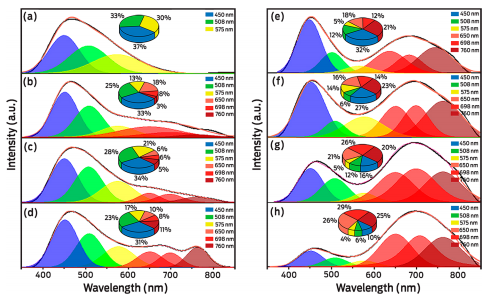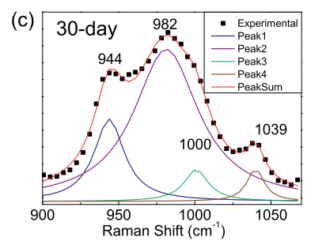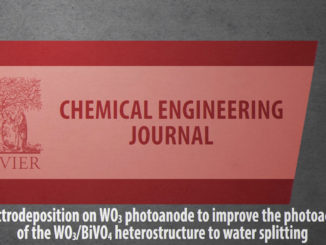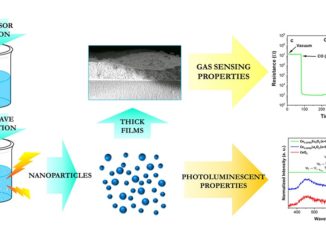
Alpha-AgVO3 Decorated by Hydroxyapatite (Ca-10(PO4)(6)(OH)(2)): Tuning Its Photoluminescence Emissions and Bactericidal Activity
Abstract: Defect-related luminescent materials have attracted interest because of their excellent optical properties and are considered as a less expensive and nontoxic alternative to commonly used lanthanide-based optical systems. These materials are fundamentally and technologically important for the next generation of full-color tunable light-emitting diodes as well as in the biomedical field. In this study, we report the preparation of a-silver vanadate (alpha-AgVO3, AV) decorated by hydroxyapatite (Ca-10(PO4)(6)(OH)(2), HA) with intense photoluminescence (PL) emissions at various HA/AV molar ratios (1:1-1:1/32) by a simple route based on chemical precipitation. The well-defined diffraction peaks observed by X-ray diffraction were all indexed to the monoclinic AV and hexagonal HA phases. Analysis of the results obtained by Fourier transform infrared spectroscopy reveals the presence of short-range structural order as deduced by the characteristic vibrational modes assigned to AV and HA systems. Characterization by scanning and transmission electron microscopies confirms the presence of AV and HA micro- and nanorods, respectively. UV-vis spectroscopy renders band gap energies of 5.80 eV for HA and in the range 2.59-2.65 eV for pure AV and HA/AV samples. The PL data reveal the presence of broad-band emission profiles, typical of defect-related optical centers in materials. Depending on the molar ratio, the emission can be completely tunable from the blue to red spectral regions; in addition, pure white color emission was obtained. On the basis of these results, we propose an order-disorder model induced by structural and interface defects to explain the PL emissions in the HA/AV system. Moreover, our results show that HA/AV composites have superior bactericidal activity against Staphylococcus aureus (methicillin-resistant and methicillin-susceptible) and can be used as a novel multifunctional material.
Author(s): da Silva, JS; Machado, TR; Martins, TA; Assis, M; Foggi, CC; Macedo, NG; Beltran-Mir, H; Cordoncillo, E; Andres, J; Longo, E
INORGANIC CHEMISTRY
Volume: 58 Pages: 5900-5913 Published: MAY 6 2019
DOI: 10.1021/acs.inorgchem.9b00249




